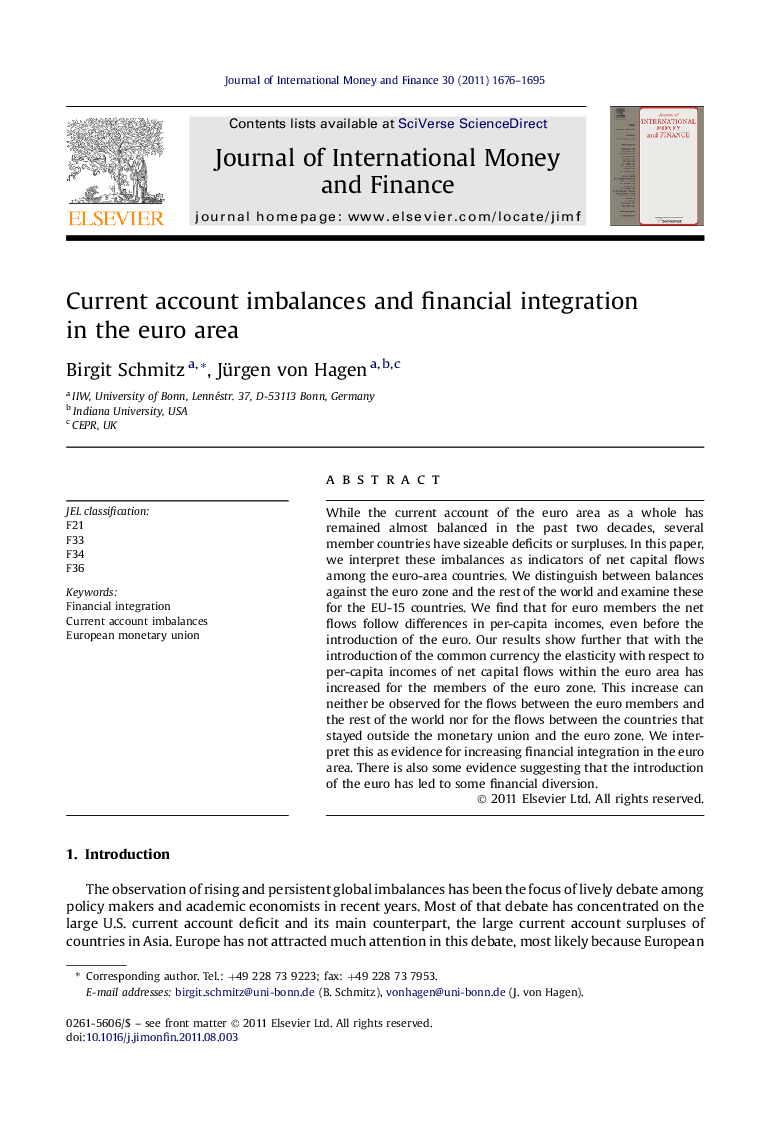| Article ID | Journal | Published Year | Pages | File Type |
|---|---|---|---|---|
| 964267 | Journal of International Money and Finance | 2011 | 20 Pages |
While the current account of the euro area as a whole has remained almost balanced in the past two decades, several member countries have sizeable deficits or surpluses. In this paper, we interpret these imbalances as indicators of net capital flows among the euro-area countries. We distinguish between balances against the euro zone and the rest of the world and examine these for the EU-15 countries. We find that for euro members the net flows follow differences in per-capita incomes, even before the introduction of the euro. Our results show further that with the introduction of the common currency the elasticity with respect to per-capita incomes of net capital flows within the euro area has increased for the members of the euro zone. This increase can neither be observed for the flows between the euro members and the rest of the world nor for the flows between the countries that stayed outside the monetary union and the euro zone. We interpret this as evidence for increasing financial integration in the euro area. There is also some evidence suggesting that the introduction of the euro has led to some financial diversion.
